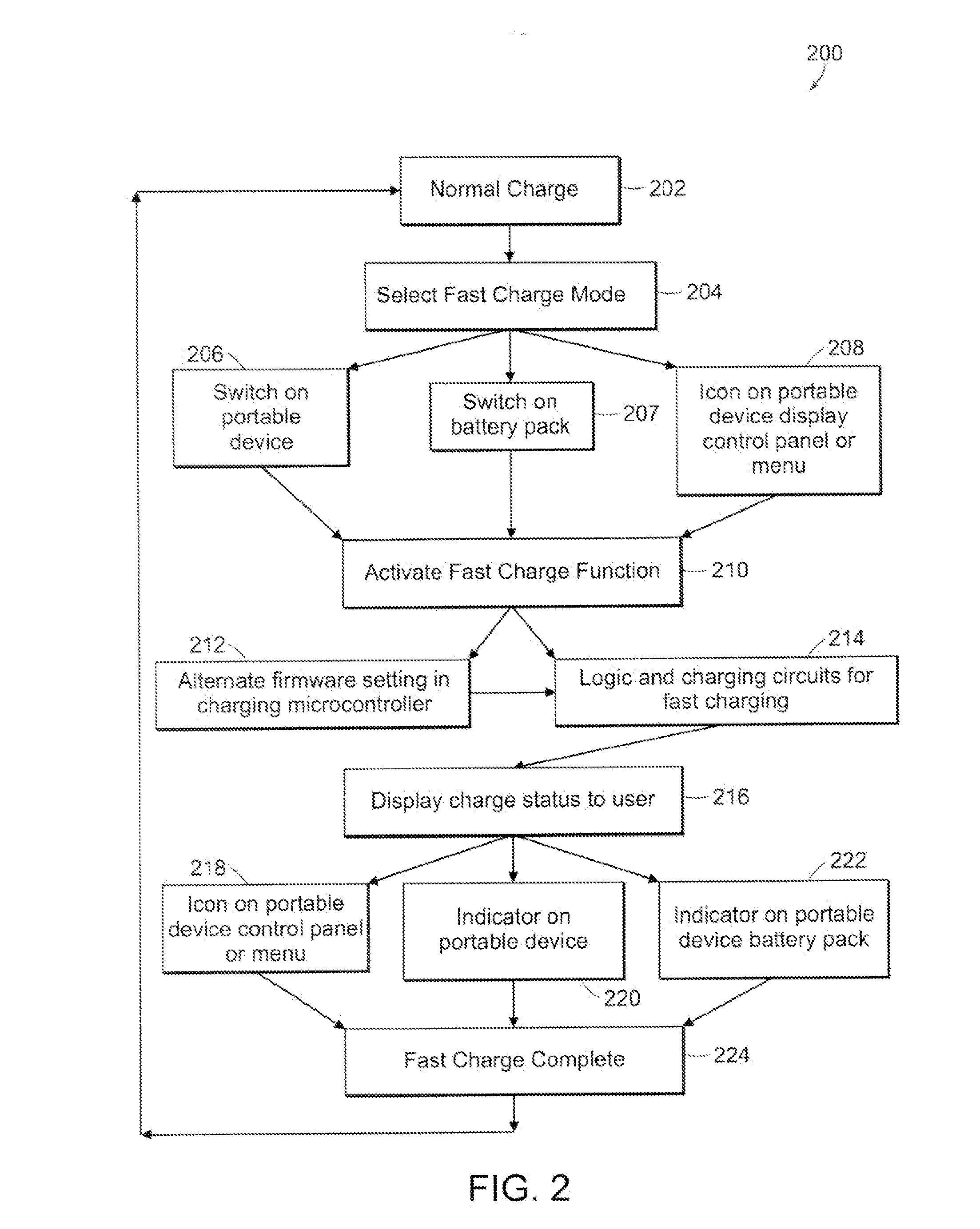Energy efficient and fast charge modes of a rechargeable battery
a rechargeable battery, energy-efficient technology, applied in the field of portable power, can solve the problems of not providing current devices such as notebook pcs also do not provide a mechanism for the user to activate an accelerated charging mode of the battery, and the current required for such fast charging modes and normal system load often exceed the power. , to achieve the effect of higher energy-efficiency operation
- Summary
- Abstract
- Description
- Claims
- Application Information
AI Technical Summary
Benefits of technology
Problems solved by technology
Method used
Image
Examples
Embodiment Construction
[0031]A description of example embodiments of the invention follows.
[0032]The teachings of all patents, published applications and references cited herein are incorporated by reference in their entirety.
[0033]FIG. 1 illustrates a functional block diagram of the electronic circuitry 100 in a battery pack as used in current practice upon which the present embodiment may be implemented. In FIG. 1, a multiple cell battery 101 may be connected to an independent overvoltage protection integrated circuit (OVP) 102, an Analog Front End protection integrated circuit (AFE) 104, and a battery monitor integrated circuit microcontroller (microcontroller) 106. One with skill in the art will understand that the present invention is not limited to the aforementioned electronic circuitry of the schematic illustrated in FIG. 1.
[0034]The OVP 102 may allow for monitoring of each cell of the battery pack by comparing each value to an internal reference voltage. By doing so, the OVP 102 may be able to in...
PUM
 Login to View More
Login to View More Abstract
Description
Claims
Application Information
 Login to View More
Login to View More - R&D
- Intellectual Property
- Life Sciences
- Materials
- Tech Scout
- Unparalleled Data Quality
- Higher Quality Content
- 60% Fewer Hallucinations
Browse by: Latest US Patents, China's latest patents, Technical Efficacy Thesaurus, Application Domain, Technology Topic, Popular Technical Reports.
© 2025 PatSnap. All rights reserved.Legal|Privacy policy|Modern Slavery Act Transparency Statement|Sitemap|About US| Contact US: help@patsnap.com



